by Ashni Mehta – Follow @ashnimehta
The following post was originally posted on withloveashni.com and republished with permission.
It’s India’s 70th birthday, so I thought I’d take some time out to talk about my favorite part of going to India—FOOD. There is absolutely nothing I love doing more in India than eating everything in sight. On average, I consume about 6-8 meals a day when I’m there, and I have zero regrets, except maybe that I didn’t eat more.
[Read Related: 7 Desi Snack Foods We Should Be Able to Buy at the Grocery Store]
So, here’s a list of six of my favorite Mumbai street foods!
1. Pav Bhaji
Pav bhaji is my favorite food of ALL time! Seriously, ask anyone and they’ll agree—in case you didn’t catch on, that’s a huge deal in my book. When I land in Mumbai, my aunt always has a plate of pav bhaji waiting for me. That is, without fail, the first thing I do when I get home from the airport, no matter what time it is. When I went a few weeks ago, I was eating pav bhaji for breakfast at 5:45 am. It’s delicious any time of day, but it’s really considered more of a lunch or dinner time snack. So, what is pav bhaji? It’s a street food originating in Maharashtra. The word pav simply means bread. Make no mistake though, Mumbai pav is incredibly soft and usually soaked in butter. Bhaji, in my opinion, is the star of this dish. It’s a tomato and potato-based vegetable curry (for the lack of a better word), spiced with classic Indian spices such as red chili powder, garam masala, turmeric, and pav bhaji masala. If you’re ever in Mumbai, Sardar and Maruti’s pav bhajis are arguably the best in the area. If you’re in the tri-state area, just find a way to get to Khasiyat on Oak Tree Road in Edison—you won’t be disappointed, I promise.
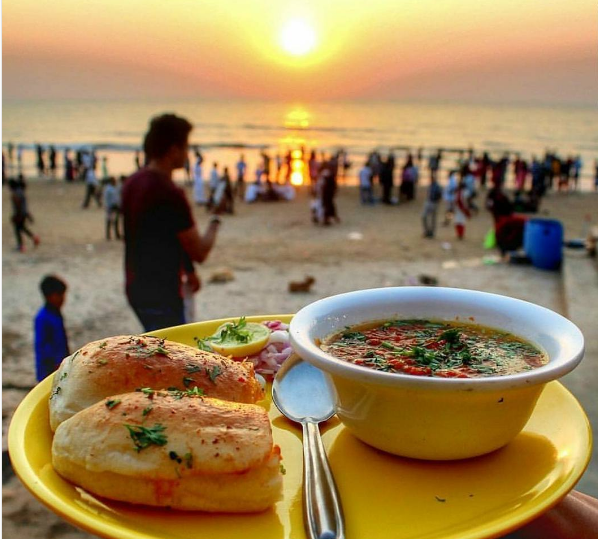 [Photo courtesy: Mumbaikar Lifestyle.]
[Photo courtesy: Mumbaikar Lifestyle.]
2. Pani Puri/Gol Guppa
I don’t think I’ve ever met anyone who doesn’t like pani puri, at least no one of Indian descent. Being obsessed with pani puri just seems to be in our genes. I can’t fully explain all of the ingredients or processes that go into making pani puri. But in India, you go up to a street cart and the vendor cracks a little, fried crepe ball, stuffs it with potatoes and lentils, adds some spicy mint water (pani), and some sweet chutney, and hands them to you one at a time. This concept sounds insane if you’ve never tried it, and typing this out made me question many life decisions, but trust me and just try it. In Bombay, my favorite place is Elco Market in Bandra. It started off as a street cart for pani puri and became so popular that they built a two-story restaurant behind it. However, the street cart still stands in front of the restaurant, and I still always order my pani puri there while waiting for my table. New York City has some amazing renditions of pani puri. My favorite being at Moti Mahal Deluxe. They give you the pani puri in shot form with differently flavored pani. Thelewala also does an excellent traditional pani puri.
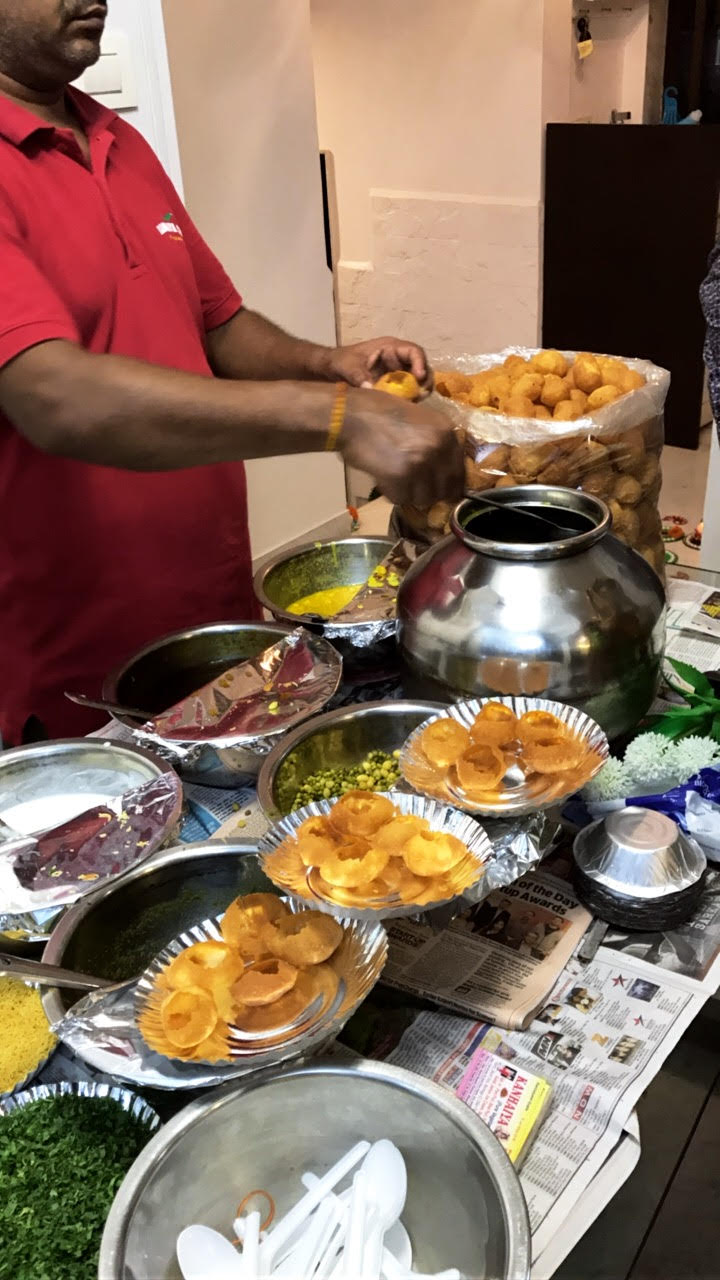
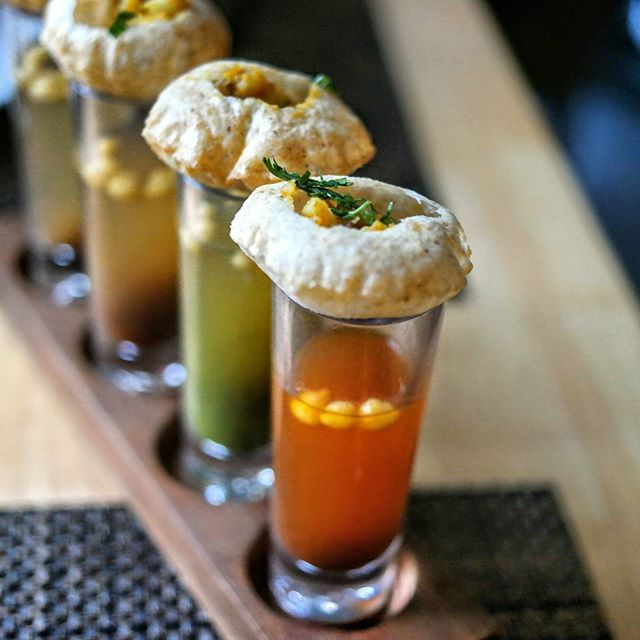
3. Vada Pav
Vada pav is another traditional Mumbai/Maharashtra street food. I’ve already told you what pav is, so now for the vada. Vada is basically just spiced mashed potatoes fried into small spheres. Okay, in reality, it’s a little more complicated than that, but we’ll leave it at this for the sake of simplicity. So you sandwich the vada in between your Mumbai pav and add my favorite part: chutneys. Vada pav traditionally has three chutneys—green, sweet and garlic. The green chutney and garlic chutney (or lasan chutney if you’re trying to sound like the locals) will add a nice kick to your sandwich. The sweet will make it sweeter…obviously. Desi Galli and Masala Times in Manhattan are both amazing places to try vada pav.
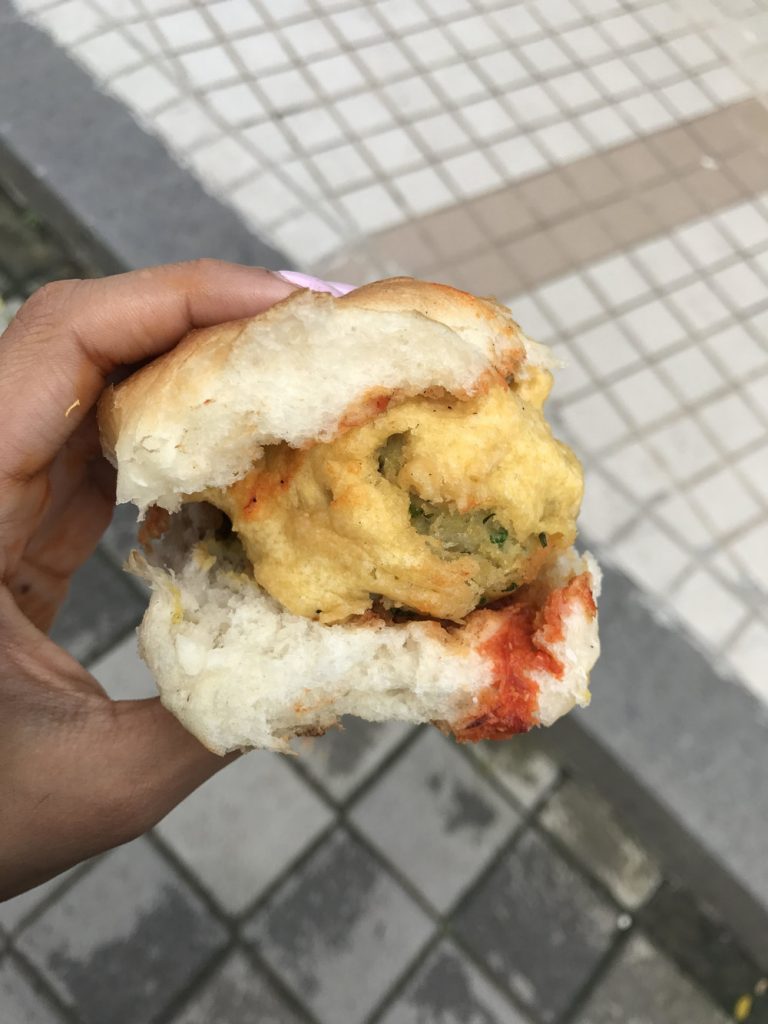
[Read Related: Feeling the Guilt? How to Eat Low-Calorie at 5 Different Fast Food Chains]
4. Dosa
Dosa is one of my favorite dishes from the southern region of India. Dosas come in all shapes, sizes, and flavors. Let me tell you, they are all AMAZING. A dosa is often described as an “Indian pancake,” although I personally think it’s more comparable to a crepe. It’s made from a rice batter, cooked on a heated pan, and often served with a potato filling, sambar(lentils), and coconut chutney. Words can’t do this justice, so just go and try it. Saravana Bhavan in Murray Hill has some of my favorite South Indian food on this side of the world. I definitely recommend it!
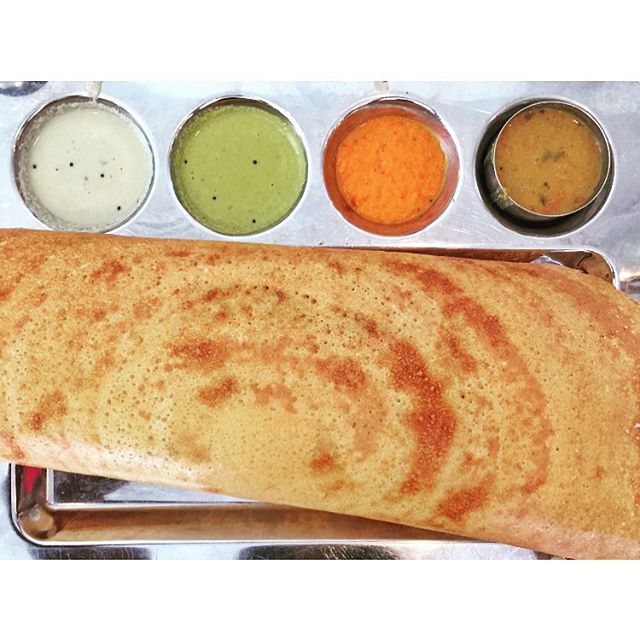 [Photo courtesy: Divya.]
[Photo courtesy: Divya.]
5. Mumbai Frankie
A Mumbai frankie is very similar to a kati roll, just with better masala. I really don’t know why everything tastes better in India, but it just does. If you want to try a frankie in New York, make your way over to the Kati Roll Co. In Mumbai, make sure to make a pit stop at Tibbs. There are multiple locations across the city.
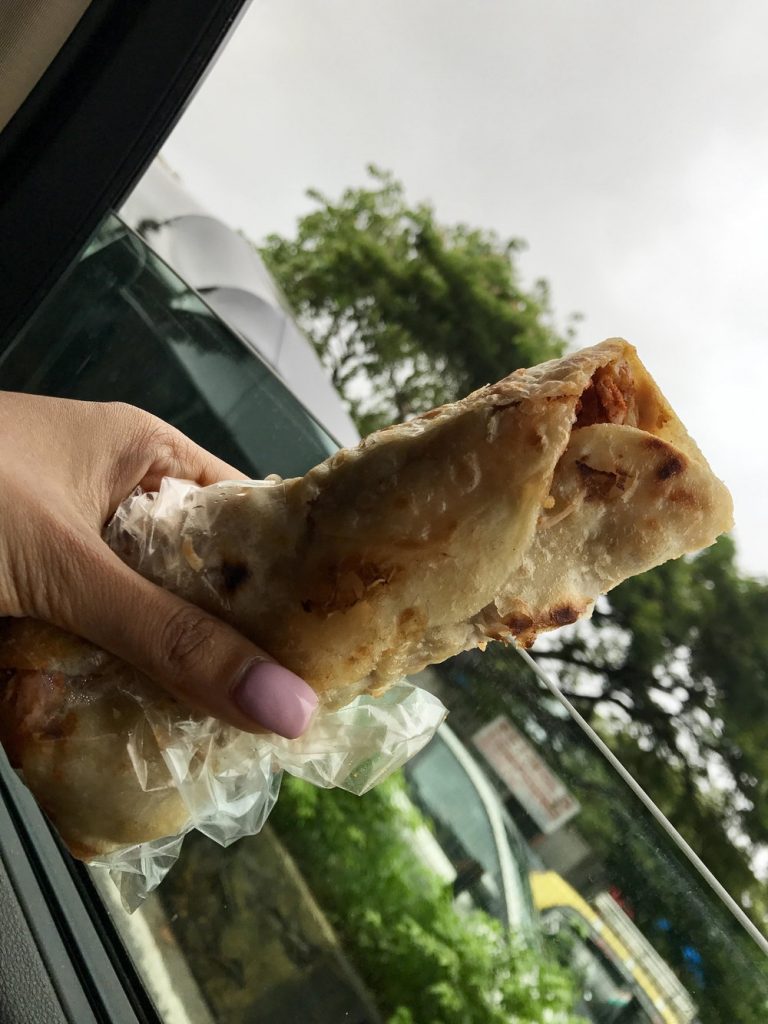
6. Paan
If you’re in Mumbai, make sure to always end your meal with paan. It’s one of the city’s signatures dishes. Paan is an areca nut, or sopari, wrapped in a betel leaf. It often has tobacco in it as well. Paan is known for its psychoactive effects, although Mumbaikars often argue that it has health benefits as well. The only place to get authentic paan in New York is Jackson Heights. So if you’re ever in the area, definitely try some. Bollywood has actually made songs over this dish, so you know it’s good.

 Ashni is a Social Media Manager, Digital Strategist and Lifestyle Blogger living in the Big Apple. Currently, she develops and executes digital strategy for the Brennan Center for Justice at NYU Law, which is a political and legal non-profit advocating for democracy and equal justice for all. She is also a professional Bollywood dancer who has performed at venues across the country such as Times Square, Madison Square Garden, Global Citizen Festival and more. When she’s not navigating the Twitterverse or dancing through life in classic Bollywood fashion, you can find her eating, laughing and shopping her way across New York City or better yet, traveling the world! You can follow her adventures on her blog, as well as Instagram and Twitter.
Ashni is a Social Media Manager, Digital Strategist and Lifestyle Blogger living in the Big Apple. Currently, she develops and executes digital strategy for the Brennan Center for Justice at NYU Law, which is a political and legal non-profit advocating for democracy and equal justice for all. She is also a professional Bollywood dancer who has performed at venues across the country such as Times Square, Madison Square Garden, Global Citizen Festival and more. When she’s not navigating the Twitterverse or dancing through life in classic Bollywood fashion, you can find her eating, laughing and shopping her way across New York City or better yet, traveling the world! You can follow her adventures on her blog, as well as Instagram and Twitter.




